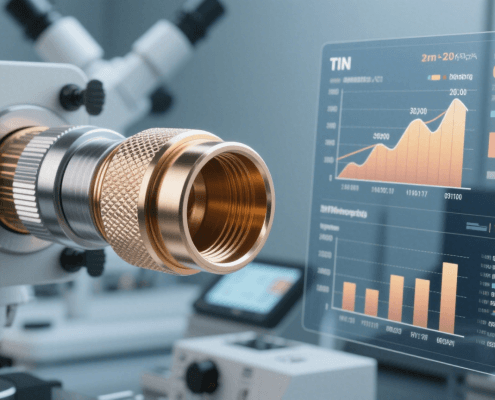Scratch-Proof Metal Connectors: How TiN Coating Saves $4.8M/yr in EV Repairs
Overview
As electric vehicles (EVs) gain global traction, the reliability of critical components like battery pack connectors has become a key focus for manufacturers. Scratches and wear on these connectors can lead to poor conductivity, increased maintenance costs, and hefty warranty claims. This is where titanium nitride (TiN) coating technology, pioneered by TE Connectivity, has emerged as a game-changer—reducing wear in BMW’s battery packs by 80% and cutting annual warranty costs by $4.8 million.
Why EV Connectors Are Prone to Wear
EV battery pack connectors are responsible for transmitting high-voltage electricity between cells, modules, and other vehicle systems. They face constant stress from:
- Frequent : During manufacturing, maintenance, or battery replacements.
- Vibration: From vehicle operation, which causes micro-movements between mating surfaces.
- Environmental factors: Exposure to moisture, dust, or minor chemical residues in the battery enclosure.

Traditional metal connectors (often made of copper alloys) have relatively low surface hardness, making them susceptible to scratches and wear over time. This damage can lead to:
- Poor electrical contact, increasing resistance and risk of overheating.
- Reduced battery efficiency or even system failures.
- Higher warranty claims and repair costs for manufacturers.
Titanium Nitride (TiN) Coating: The Solution
Titanium nitride (TiN) is a ceramic compound applied via physical vapor deposition (PVD) or similar processes. Its unique properties make it ideal for protecting EV connectors:
| Property | Benefit for EV Connectors |
|---|---|
| High hardness (~2000 HV) | Resists scratches and abrasion from repeated contact or vibration. |
| Low friction coefficient | Reduces friction during 插拔 (mating/unmating), minimizing wear on contact surfaces. |
| Corrosion resistance | Shields connectors from moisture or chemical exposure in battery packs. |
| Thin, precise application | TE Connectivity’s 15μm coating adds minimal thickness, preserving connector fit and function. |

TiN coating characteristics
TE Connectivity’s 15μm TiN Coating in Action
TE Connectivity, a leader in connectivity solutions, optimized TiN coating for EV battery connectors with a 15μm thickness—striking a balance between protection and cost-effectiveness. When deployed in BMW’s battery packs, the results were transformative:
- 80% wear reduction: The TiN coating’s hardness and low friction significantly reduced surface damage from 插拔 and vibration, extending connector lifespan.
- $4.8M annual savings: Fewer worn connectors translated to fewer warranty claims and repairs for BMW, cutting annual costs by $4.8 million.

Broader Impact for the EV Industry
This case highlights a critical trend: material science innovations are key to lowering EV ownership and manufacturing costs. TiN coating isn’t limited to BMW—its scalability makes it applicable to other automakers and even non-automotive high-wear components (e.g., industrial connectors, medical devices).
As EV demand grows, reducing maintenance costs will remain a priority. TiN coating proves that targeted, material-level improvements can deliver outsized financial and reliability benefits.
Key Takeaway: TiN coating transforms EV connectors from a high-maintenance liability to a durable asset, with real-world results (80% wear reduction, $4.8M/yr savings) that underscore its value for the industry.




